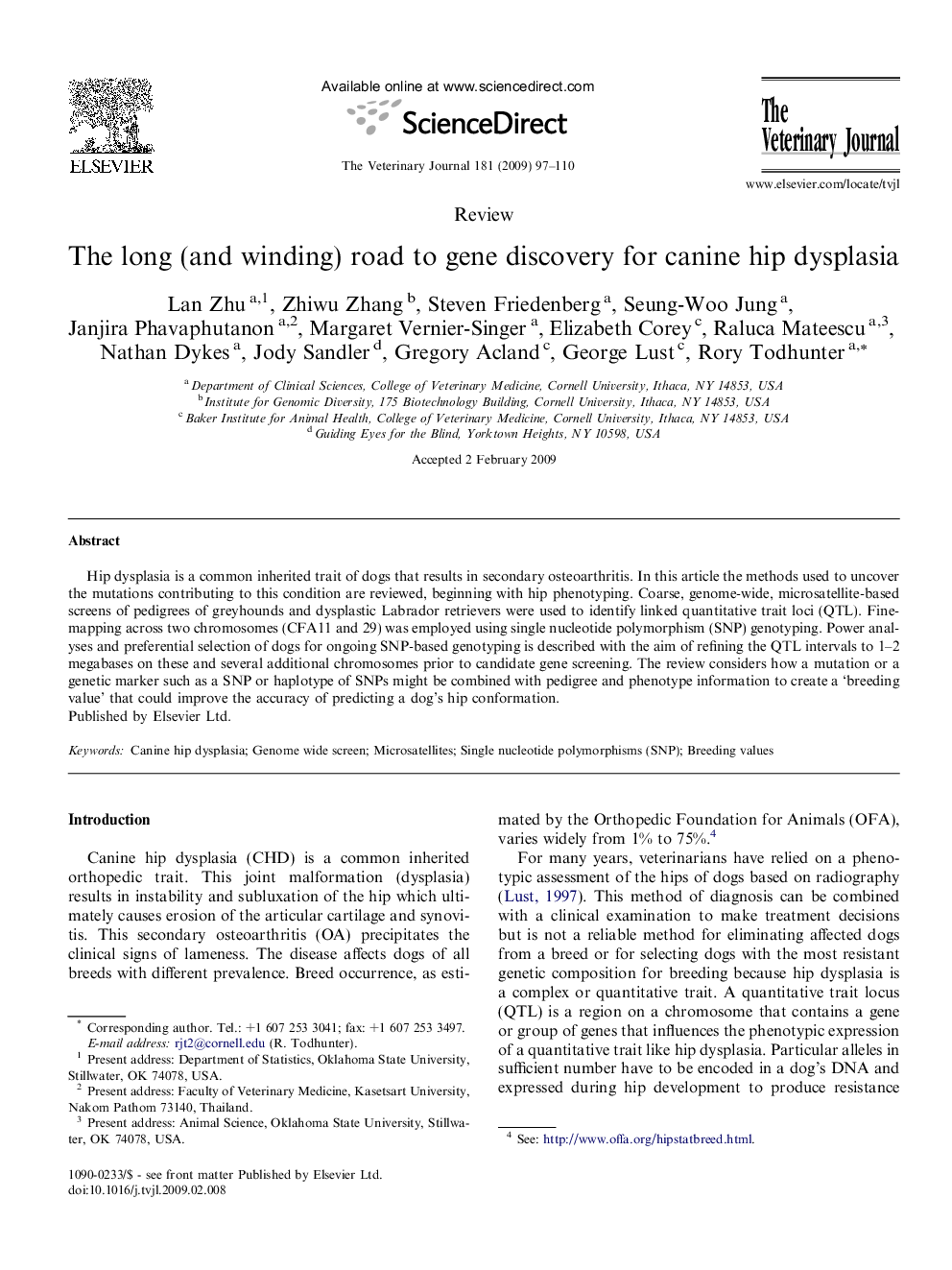| Article ID | Journal | Published Year | Pages | File Type |
|---|---|---|---|---|
| 2465227 | The Veterinary Journal | 2009 | 14 Pages |
Hip dysplasia is a common inherited trait of dogs that results in secondary osteoarthritis. In this article the methods used to uncover the mutations contributing to this condition are reviewed, beginning with hip phenotyping. Coarse, genome-wide, microsatellite-based screens of pedigrees of greyhounds and dysplastic Labrador retrievers were used to identify linked quantitative trait loci (QTL). Fine-mapping across two chromosomes (CFA11 and 29) was employed using single nucleotide polymorphism (SNP) genotyping. Power analyses and preferential selection of dogs for ongoing SNP-based genotyping is described with the aim of refining the QTL intervals to 1–2 megabases on these and several additional chromosomes prior to candidate gene screening. The review considers how a mutation or a genetic marker such as a SNP or haplotype of SNPs might be combined with pedigree and phenotype information to create a ‘breeding value’ that could improve the accuracy of predicting a dog’s hip conformation.
